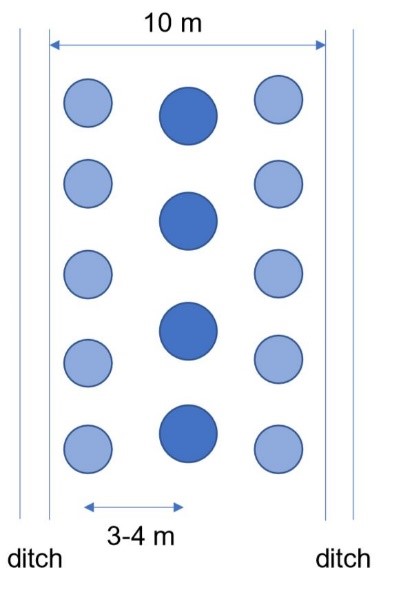

The planting scheme should be adapted to the local site conditions as well as the location, length and width of the windbreaks. The windbreak may consist of three to four rows of different tree and shrub species with a total width of 10 m and a distance of 400-500 m between them. While the middle row consists of large trees (black locust, common ash, Caucasian hackberry, field elm), the outer rows, include smaller trees or shrubs (almond, China tree, Russian olive, pistachio, wild pear, wild apricots). The distance between trees and shrubs is 2-3 m with 2-3 m between the rows in chess order.
The seedlings should be planted in autumn according to the well-designed plan as it is described in the graphic attached. This allows the root to rest for a while and enhances the chance for sufficient precipitation, rain and snow. The planting sites are prepared to ensure water flow. It is advisable to set protective tubes during the winter. They provide good protection against wind and animals with an increase of the survival rate by more than 70%.
Intercropping of vegetables, such as onions and potatoes in windbreaks can bring good results and encourage people to maintain and protect windbreaks from fire.